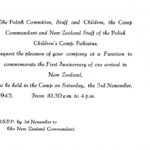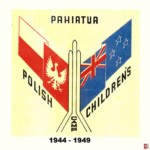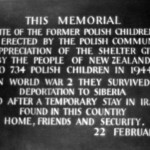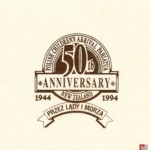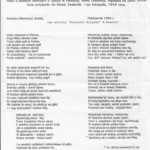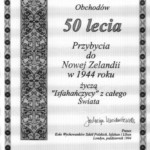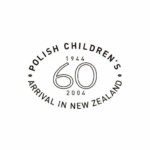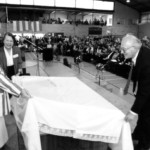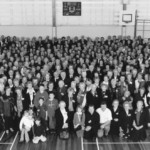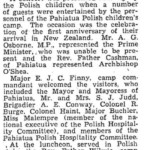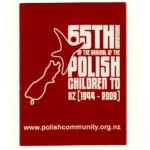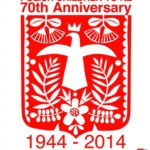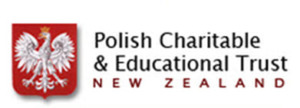Polish Refugees in New Zealand 1944-1951
Exhibitions
Commemoration
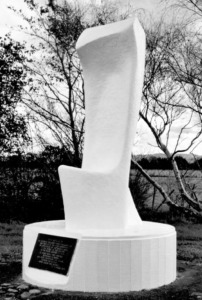
Monument on the site of the Pahiatua Camp (representing a mother and child on a ship) sculpted by Tanya Ashken and erected on 22 February 1975.
Stanisław Manterys: In 1971 a group of the former Pahiatua Polish children formed a committee to seek to erect a new monument. The owners of the farm granted a small piece of land next to the highway where once stood the back gate to the camp, and the Pahiatua counsel converted the ground into a roadside rest area. The monument was unveiled at an official ceremony on 22 February 1975. Some of the stones from the old grotto were embedded in the monument’s pedestal. The stylised form represents a mother and child on a sailing ship. In 1994, on the 50th anniversary of the Polish children’s arrival in New Zealand, a permanent display board describing the camp was erected, in Polish and English.
New Zealand Memories; Issue 101 April/May 2013
30th Polish Children Reunion Committee: This memorial rest area is now a public reserve to be maintained by the Ministry of Works and Development. The monument is designed and sculptured by Tanya Ashken. The words on the plaque record this historic story.
THIS MEMORIAL ON THE SITE OF THE FORMER POLISH CHILDREN’S CAMP WAS ERECTED BY THE POLISH COMMUNITY IN APPRECIATION OF THE SHELTER GIVEN BY THE PEOPLE OF NEW ZEALAND TO 734 POLISH CHILDREN IN 1944 IN WORLD WAR II THEY SURVIVED DEPORTATION TO SIBERIA AND AFTER A TEMPORARY STAY IN IRAN FOUND IN THIS COUNTRY HOME, FRIENDS AND SECURITY 22 February 1975
30th Reunion Booklet
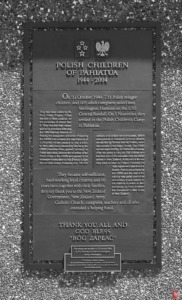
60th Anniversary Plaque located on the Wellington waterfront. The plaques was funded by Mr John Roy-Wojciechowski one of the children of Pahiatua.
Irena Lowe: A plaque commemorating the Polish Children of Pahiatua was unveiled on 25 October 2004 by Her Worship the Mayor of Wellington, Kerry L Prendergast, in the presence of the Rt Hon Helen Clark, the Prime Minister of New Zealand.
The Honorary Consul for Poland at the time, Mr John Roy-Wojciechowski and his wife Valerie gifted the plaque to Wellington City. The plaque is on the iconic waterfront of Wellington City and is very visible. Tourists can often be observed reading the inscription. The Polish community and the Polish government honour the history of the Polish Children of Pahiatua by laying wreaths under the plaque at times of commemoration and special visits of the Polish Government to New Zealand.
The message on the plaque reads:
Polish Children of Pahiatua 1944–2004
On 31 October 1944, 733 Polish refugee children and 105 adult caregivers sailed into Wellington Harbour on the USS General Randall. On 1 November, they settled in the Polish Children’s Camp in Pahiatua.
They had been invited by Rt Hon Peter Fraser, Prime Minister of New Zealand, for the remainder of World War II. They had lost their homes and family members following the 1939 German invasion of Poland, the occupation of Eastern Poland by the USSR and subsequent deportations of 1,700,000 Polish people to the USSR.
In 1941, after being attacked by Germany, the USSR joined Allies, granted “amnesty” to Polish deportees, allowed the formation of the Polish Army in the USSR and agreed to its subsequent evacuation to Iran (Persia) to fight the common enemy. However, only 120,000 soldiers and civilians were evacuated, before mass graves of thousands of Polish officers, murdered by Soviet Secret Police, were discovered in the Katyn Forest. The USSR denied responsibility, but halted the amnesty. After two years in Iran, the 733 children who had been part of the evacuation from the USSR arrived in New Zealand. At the end of the war they were to return to Poland. However, the Yalta Agreement ruled this out. Eastern Poland was annexed by the USSR and the rest of the country was under communist domination. It was unsafe for the children to return to their homeland, so most accepted the Government’s offer to stay in New Zealand. They became self-sufficient, hard-working loyal citizens and 60 years later, together with their families, they say thank you to the New Zealand Government, New Zealand Army, Catholic Church, caregivers, teachers and all who extended a helping hand.
Thank you all and God bless “Bóg Zapłać”
Voices
Photos
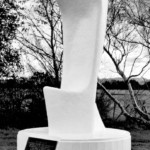
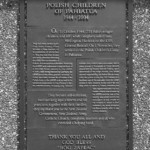
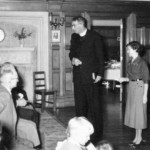
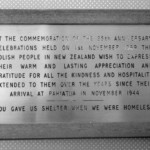
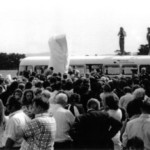
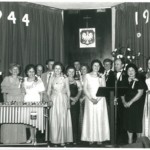
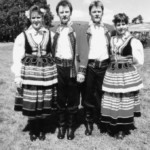
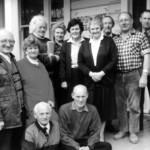
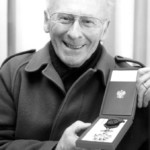
Documents
